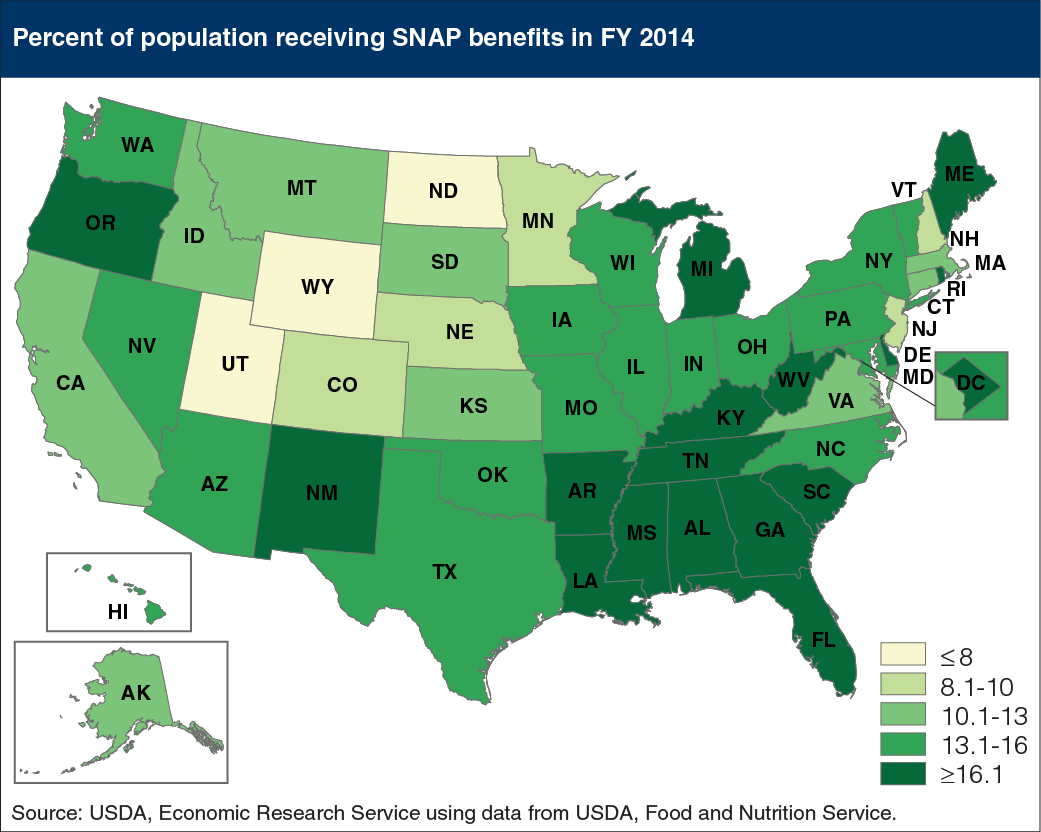Percent of residents receiving SNAP benefits in 2014 declined in many States
- by Laura Tiehen
- 6/2/2015

USDA’s Supplemental Nutrition Assistance Program (SNAP) served an average of 46.5 million people per month in fiscal 2014. The percent of Americans participating in the program declined from 15.0 percent in 2013 to 14.6 percent in 2014, marking the first decline in the percent of the population receiving SNAP since 2001. Between 2013 and 2014, 42 States and the District of Columbia saw a decrease in the percent of residents receiving SNAP benefits, while 8 States experienced small increases. The percent of State populations receiving SNAP benefits ranged from a low of 6.1 in Wyoming to a high of 21.9 in Mississippi, reflecting differences in need and in program policies. Southeastern States have a particularly high share of residents receiving SNAP benefits, with participation rates of 15.8 to 21.9 percent. Utah had the largest decline from 2013 to 2014 and joined Wyoming and North Dakota as States with less than 8 percent of the population receiving SNAP benefits. This chart appears in the ERS data product, Ag and Food Statistics: Charting the Essentials, updated May 7, 2015.


